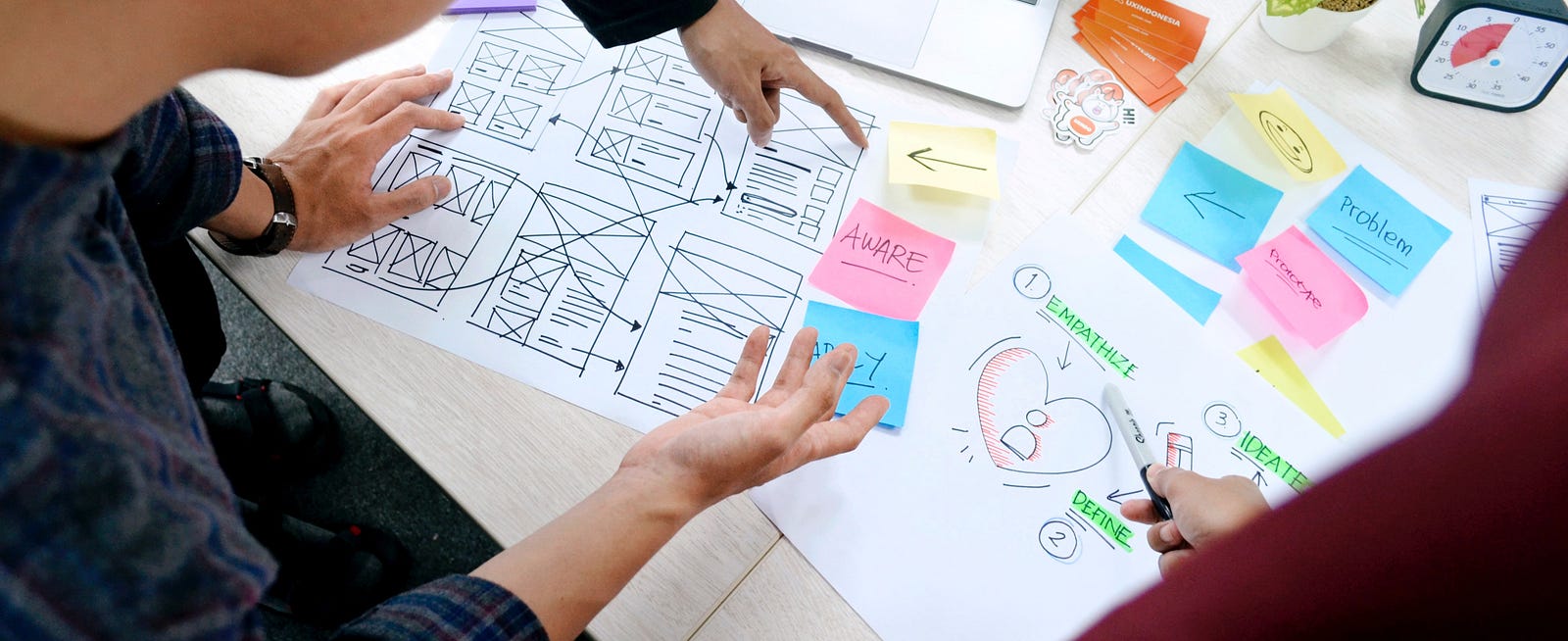October 23, 2020
Product-market-fit. These three words will change your approach to design. They’ll leave you puzzled, and at the same time so empowered. It’s not just for product leaders and managers. Read on to know why every designer needs to know this.
You may have heard about many products that connected with the people, and spread and made it big despite having — so to say ‘poor designs’, or not much visual design at all. Think Twitter, Facebook, Google, Youtube. You know where they are now. It makes you wonder, what then IS the value of design. If those products can deliver value to people without much design, why do we need design at all. Are our skills in jeopardy. What is the real skill to learn here. If you’re not wondering, it’s a good time to start.
It was a troubling thought for a while, till I found my answer.
The mystery of super success of these products was resolved on learning more about product market fit(PMF). It’s when the market is so aligned with your product that they actually want to give you their money to use it, and the word of mouth really helps in the growth of the product. All of those products achieved significant pull from the market because they found themselves at the right time at the right place, telling a story that people were open to hear. You can read more about product market fit in this wonderful article by Lenny Rachitsky — Link
Not all products can be found at the right time at the right place, telling the right story. And since markets are crowded with products of all shapes and sizes for all kinds of requirements, situations gets more difficult. A product can persevere for long enough, repeatedly telling its value, making people realise that they may need it after-all, otherwise it just gets wiped out. This is where great design comes in. Any product can reach towards product market fit(PMF) with great design.
At a high-level, each time branding is done, an ad is created or any other marketing collateral, or user experience is fixed, you’re moving closer to the product market fit. Good design and good storytelling creates a need for the product, explains its solution and is present at the right place.

Let’s see it in terms of design thinking
Design thinking is entirely based on the concept of PMF. Infact it appears to be reverse engineering of PMF. It begins by understanding the customers(or the people consuming the product). Understanding their behavioural patterns in real life, how they respond to the environment, the challenges they face in context of the problem. Understanding the market and generating deep insights about the people first and then creating a product for that need. Hence a fitment is being found, right from the start. Much more than the chance of being at the right place at the right time, those favourable conditions are being manufactured. In the end it produces the same result. The product adoption build with design thinking process finds a much higher rate of adoption.
Well, PMF as it turns out, is one of the most difficult things to achieve for any product and as the inventor of the concept Andy Rachleff says that it’s the only thing that matters. Hence, it makes all the sense to align all resources towards finding the fitment.
This means if you’ve only been designing for the screen, or pushing pixels, there’s much to change in the design approach. The change revolves around questioning how the design solves people’s immediate problem. If it doesn’t solve, does it help them realise it? If the design’s placement isn’t right, it’s anyhow going to be ignored, or it’s going to take a really really long time with really really focused positioning.
Design’s support towards PMF is also supported by Eric Reis’ Lean Startup framework (see here), which suggests UX as one of steps towards achieving PMF. Not stopping here, I see an even greater opportunity for various other design disciplines such as branding, communication design, interface design to contribute towards PMF.
Reaching PMF through design process
As a designer, designing/building your own product can provide a lot of experiential knowledge and resonance with the approach I am putting forth. I’m sure you will start aligning all of your efforts towards fitment. Being waist deep into building a product (Glific), I found myself(and the team)doing all of these —
- Focusing on the UI/UX of the product for an easy to use appearance and experience of the product,
- Blogging about the problems and how the product was the solution,
- Creating feature demo videos,
- Branding and finding a unique visual language as a differentiator,
- Designing product videos to easily explain the value to new and uninitiated people,
- Designing presentations and webinars,
- Designing posters and ads to get people curious about the product,
- Iterating the product with initial alpha-users and constantly improving the product based on the feedback of customers with real use case.
Number 8 is indeed the biggest of them all but other efforts also keep the spirits and the environment of the product going. Outward communication may be toned down if you’re worried about competition. But throughout these steps you’ll learn important things about the product, whether to tell the story better, or improve the product. These designs will be act as a meter.

Why is design required for finding PMF
With the end goal of having many people using your product, they may face various hurdles along with path such as,
- not enough people knowing about the product
- no clear understanding of the product offering, and how it solves their problem
- not easy to adopt it into their existing processes
- procrastinating to use it if it doesn’t ‘look’ easy to use
- getting stuck while using it
- not being able to explain it’s value to their stakeholders/decision-makers
- not wanting to be the first one to use it
This is the reason, diagnosing the right challenge and being able to fix it where required can be a great skill for any designer. All of the product challenges can be solved with a design hat because the ultimate goal of a designer is to enhance the experience of using the product.
With a constant goal of the designer to reach product-market-fit, more products can witness success among their target audiences.